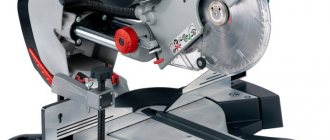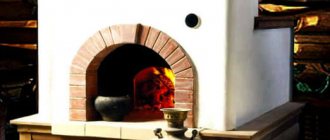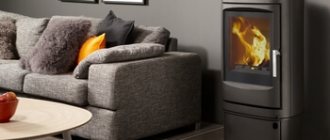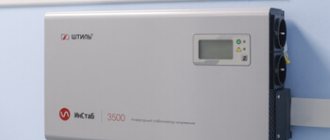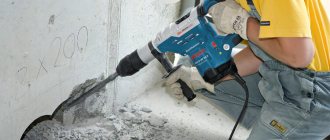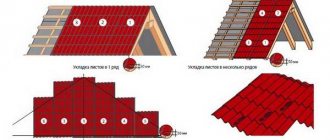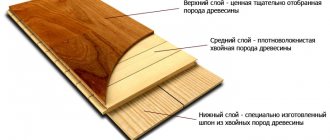One of the most difficult issues in equipping a bathhouse is selecting a stove for it.
You should not rely only on aesthetic characteristics, because the technical characteristics of the equipment play a much larger role. One of the key parameters is the power of the unit, because the optimal heating area depends on it.
It is also desirable that the stove has a container for heating water.
There are other criteria that you should pay attention to when choosing.
They are listed below. Guided by this checklist, every bathhouse owner will be able to choose the right equipment, and the rating of the best models according to the 2021 version in terms of price/quality ratio will help you finally make your choice.
Rating of the TOP 12 best stoves for saunas with a tank in 2021
| Place | Name | Price |
| TOP 4 best sauna stoves with a tank by price/quality for 2021 | ||
| 1 | Harvia M3 SL | Find out the price |
| 2 | TMF Biryusa 2013 Carbon anthracite | Find out the price |
| 3 | Harvia 20SL | Find out the price |
| 4 | Teplodar Sahara 10 LB/LBU | Find out the price |
| TOP 4 best stoves for a wood-burning sauna with a tank | ||
| 1 | Vesuvius Rusich Aqua 22 (DT-4) with 61l tank | Find out the price |
| 2 | Birch Favorite 24 | Find out the price |
| 3 | Vesuvius Rusich Aqua 16 (DT-4) with 49l tank | Find out the price |
| 4 | TMF Skoroparka 2021 Inox Vitra B | Find out the price |
| TOP 4 best inexpensive sauna stoves with a tank | ||
| 1 | Konvetika Konvetika 12B | Find out the price |
| 2 | TMF Tunguska 2021 Inox DN TO anthracite | Find out the price |
| 3 | Varvara Palenica Wall mounted shortened firebox | Find out the price |
| 4 | TMF Biryusa 2013 Inox Vitra ZK | Find out the price |
Masonry technology
Before you start laying the stove with your own hands, you need to choose a diagram and draw an order plan with your own hands; it is better to use ready-made, proven diagrams. An example of such a stove is the Kuznetsov stove with a heating register built into the smoke duct on one side of the stove.
Kuznetsov stove, video
To lay such a stove with your own hands in a private house, you will need the following materials:
- concrete for the foundation;
- red solid brick;
- refractory fireclay brick;
- masonry mortar or its components: clay, clean dry sand, clean water;
- metal pipes for making a heat exchanger.
You also need to buy ready-made elements: grate, doors, dampers, dampers, roof penetrations. The price for these elements is usually quite high, so you need to calculate in advance what exactly is needed.
Required tool:
- trowels and trowels;
- rubber hammer;
- grinder with a circle for bricks;
- levels, plumb lines, twine;
- roulette.
Do-it-yourself sequence of operations
- Mark the position of the future furnace and pour a rod-reinforced foundation 5 cm below the finished floor level. It should not come into contact with the foundation of a private house.
- After the foundation has completely dried, two rows of masonry made of red solid bricks are laid out according to the order scheme and drawing on ordinary cement masonry mortar; their purpose is to level out possible unevenness in the foundation and lay the foundation of the furnace.
- The next rows are laid on clay masonry mortar according to the chosen pattern, observing the dressing indicated on it. The solution is made from pre-soaked red clay, quarry sand and clean cold water. The optimal ratio of clay and sand is determined experimentally.
Properly prepared masonry mortar should not be too plastic or crumbly. You can check it this way: roll a ball the size of a tennis ball out of the solution and drop it from a height of 1 m onto a flat surface. It should be slightly deformed, covered with small cracks, but not crumble.
- The thickness of the joints between the rows of bricks is no more than 5 mm. The smaller the seams, the more uniform the structure of the stove and the better the heat transfer. The jointing is carried out immediately as the laying proceeds.
- The doors are installed like this: an asbestos sheet in the form of a strip is placed on the previous row of bricks at the location where the door is installed, and the door is placed on it. Annealed wire, each at least 40 cm long, is pre-inserted into the holes in the corners of the frame. This wire is fixed between the rows of masonry. If this is not done, sooner or later the solution will crumble and the door will fall out. They lay several rows, all the time checking the position of the door according to the level. An asbestos strip is also laid over the door and brick is laid on top.
- The firebox is lined with fireclay bricks. Red ceramic is not suitable for these purposes - it will crack over time, and the vault may collapse. In diagrams, fireclay bricks are usually indicated in yellow.
- Under the hob, grooves are made in the brick to the thickness of the slab. This is done to reduce heat loss and prevent smoke. The plate is placed on the solution.
- A homemade heat exchanger is installed in the smoke channel during the masonry process at the stage of laying the row through which the lower fitting exits. It is installed in the combustion chamber when laying the bottom row of the firebox. There must be a gap of at least 5-7 mm between the heat exchanger and the brick.
- It is imperative to provide cleaning doors in the smoke channel with the heat exchanger, since soot will settle on the register, which will worsen its heating. The number of doors must provide access for cleaning to any part of the heat exchanger.
- The upper part of the smoke channel is equipped with a damper or damper. The chimney itself can be either brick, or you can buy and install a sandwich chimney. In this case, you need to follow the rules for passing pipes through the roof, and make fluff on brick pipes.
The distance from heated metal elements to combustible structures must be at least 25 cm! Passages through the ceilings are insulated with basalt fiber or other non-combustible materials!
- After the oven has dried, it is carefully heated, without overheating, several times. Check the draft, stability of firewood combustion, and absence of smoke leaks. After this, you can install an external heating circuit and fill the system with water. The oven is ready for use.
How to choose a stove for a sauna with a tank?
To make visiting the bathhouse comfortable, you should choose the right stove with a tank.
The main selection criteria are:
- Case material . Most manufacturers make stoves from high-strength steel. It is resistant to mechanical damage and practically does not heat up during operation, which completely eliminates the risk of accidental burns.
- Fuel type . Sauna stoves can be powered by gas or solid fuel. It is advisable to choose models that operate on combined fuel, as this will significantly expand the operational capabilities of the device.
- Power . Each stove model is designed to heat a room of a certain area. There is no point in saving on this criterion, because if the device operates at its maximum capacity, the room will not warm up completely. It is advisable to choose equipment a little more powerful than intended for the steam room.
It is also advisable to pay attention to the shape of the firebox removal, especially if the stove will be fired from an adjacent room. In this case, it is better to choose a device with a straight firebox, because it will be much easier to install.
Rules for installing a boiler in a brick kiln
Making good boilers for installation in a stove with your own hands is not a difficult task, but there are subtleties and nuances here too. For example, it is better to take a thick-walled and seamless pipe for them, but in the most extreme case, when there are no other options, you can take one with a seam - but be sure to weld it again before that.
It is best to weld the supply near the edge of the upper thick pipe, but the return – wherever your heart desires, it will still work. Further, pipes cannot be butt welded - it is necessary to chamfer along their edges so that the welding seam is the same thickness as that at the pipe walls. But when butt welding, some places can easily turn out to be poorly welded, and therefore the boiler will begin to leak.
The optimal distance between the knees is 5-6 cm, this is the most convenient way to cook. By the way, if it suddenly turns out that the new boiler is leaking into the brick oven like a sieve, it’s okay. All holey places will just need to be cleaned with a grinder, a grinding disc and rinsed again.
It is necessary to place the boiler in the furnace strictly according to the level, although very small errors are still acceptable. But - small.
Rules you need to know when building a chimney
Diagram of a brick chimney.
The structure for solid fuel boilers is made together with the walls of a private house. These elements are constructed according to a single principle, and it does not matter whether the channels will be used as ventilation or smoke. You will definitely need to build a foundation for the chimney. The base structure can be made of brick or concrete.
In all cases, a foundation project is prepared. During the design process, it must be taken into account that its height must be at least 30 cm, and its width must be such that the base structure extends beyond the border of the chimney device by 15 cm or more. If the chimney is made as an element of the external wall, then you need to know that the lower part of the chimney base must be placed at the lower level of the wall base.
During the construction of chimney structures, special attention should be paid to the quality of tightness. To make a durable brick chimney, you will need to follow the rules
The material should be laid so that the seams overlap the elements of the next row. In most cases, the same mixture is used as for the construction of load-bearing walls of the structure.
In the process of making a chimney for a solid fuel boiler, it must be taken into account that its internal base must be smooth.
Therefore, when performing construction work, you need to use a template. The walls between the elements must be at least half a brick thick. For ventilation elements, the thickness of the partition should be 2 times less.
At the end you will need to make a header. The extreme parts of the element must protrude beyond the structure by 10 cm or more. The outlets of the ventilation ducts must be created under the head; in most cases, 2 walls are used, which are placed opposite each other. This placement method will prevent air from being blown in.
Radiator assembly
Assembling radiators is a simple process, because it completely repeats the process of disassembling them. The sections are connected by nipples that have left and right threads on both sides. This way, the sections at the top and bottom will be pulled tightly against each other when the nipple is turned. When the gap becomes 2 cm wide, you should wind the asbestos-impregnated cord and only then tighten the nipples completely.
When the entire structure is assembled, you should wait for the drying oil to dry, and then check the joints for leaks. that is, supply water under high pressure to the radiator. This will ensure the subsequent use of the radiator and there will be no leaks.
The return and coolant supply pipes must be connected diagonally to the radiators. Holes that remain open must be closed with plugs. It is better to take inch pipes. On one side of the radiator there will be a right-hand thread, so there will be no difficulties with connection. On the opposite side, use a coupling with a squeegee and a nipple.
Making a steel stove-stove
The construction of a homemade sauna stove with a built-in heater and water tank is shown in the drawing. The design is quite simple - the body of the heat generator, made of an iron pipe, is divided into 4 compartments - an ash chamber, a firebox, a heater and a water heating tank. At the bottom of the firebox there are grates, between the remaining sections there are metal partitions crossed by a chimney.
The following materials will be used to manufacture the heater:
- pipe with a diameter of 400-500 mm;
- sheet metal 3 and 5 mm thick for partitions;
- fittings or corners for the grate;
- pipe Ø10-15 cm for the chimney.
Advice. For the body, it is advisable to find a thin-walled pipe (3-5 mm), since standard rolled metal with a wall thickness of 8-10 mm will be too heavy. The height of the stove can be adjusted due to the size of the heater, tank and firebox.
The procedure for assembling a heat generator with an integrated tank:
- Align the ends of the pipe with a grinder, cut openings for loading hatches and doors. Treat sharp edges.
- Place the cut pieces of metal on the doors - clean the edges, weld the handles and hinges.
- Make round partitions with holes for the flue. Make the firebox vault from 5 mm thick steel, the remaining covers from 3 mm sheets.
- Weld the grates from reinforcement Ø12-18 mm or angles No. 4-4.5.
- Mount all workpieces according to the drawing. Clean the welding seams and check for permeability using kerosene.
Equip the tank located on top with a convenient lid, cut a fitting into the bottom of the container and install a drain valve. It is better to reinforce the junction of the chimney and the firebox roof with stiffening ribs made of metal triangles, since this place burns out first. How to properly make such a stove, see the latest video:
Terms of purchase
We offer to buy stoves with a water circuit for heating on favorable terms:
- With delivery throughout Moscow and remote regions of Russia. You can find out the cost of delivery on our website in the “Delivery and Payment” tab.
- Guarantee. All equipment sold undergoes quality control and is equipped with certificates of compliance with domestic and international standards. We provide a warranty on stoves for a period of 1 year.
- Affordable price. We work directly with heating equipment suppliers, this allows us to eliminate intermediary markups and create the best offers.
- Installation services. If you are not sure that you can handle the installation yourself, order it from us. Our specialists will advise on installation and carry out the installation correctly.
To get advice and order equipment, contact our specialists by phone or request a call back.
What dimensions should the chimney have?
Chimney placement options.
The draft in the chimney channel will occur due to differences in the height of the inlet and outlet, as well as due to temperature differences. To ensure continuous operation of any heating device, you will need to make a strong draft
Before starting masonry, it is important to decide what type of heating device will be used, what dimensions it has and how many channels it is planned to make
The number of channels can be determined taking into account the power of the heating device, fuel and the special requirements of the device manufacturer.
If the diameter of the chimney channel significantly exceeds the calculated value, the draft in such a channel will greatly decrease. As a result, there will be frequent interruptions in the functioning of a gas boiler or other heating device. If the channel diameter is smaller, this may impede the removal of combustion products. It is for this reason that in most cases the operation of boilers stops.
To make brick channels, you will need to use ceramic brick grade M50-75. You can also use concrete blocks that have channels with a square cross-section.
If you plan to use ceramic bricks to make a chimney, then you should know that its minimum cross-section is 14x14 cm. If you plan to purchase material with a round cross-section, then the permissible diameter is 15 cm or more.
In a brick chimney whose height is less than 5 m, the dimensions of the channels must be increased to 14x20 cm or 18 cm in diameter. Such structures should be made in the walls between rooms that are planned to be heated. In this way, it will be possible to create a certain protection of supporting structures from cooling, which in most cases leads to a weakening of traction.
It is necessary to try to group the chimney channels so that in the device that will be installed above the roof, their number is maximum. In this way, it will be possible to reduce the cost of manufacturing work and significantly improve the performance of the chimney device.
Flat-plate heat exchanger
A popular option, which is used both for stoves in the bathhouse and for the home. They are the simplest to manufacture, the surface is easy to clean from soot accumulations, installation is possible both vertically and horizontally, and the efficiency is relatively high.
A flat boiler can have a high volume, so you can take hot water for washing directly from the heating system. An expansion tank with an increased linear size is installed, into which water constantly flows after the level drops below critical. This option is quite convenient and helps solve several problems at once, but there is also a condition - the room temperature in winter should not drop to minus.
Key disadvantage: a sharp decrease in heat transfer from the furnace walls. This type of heat exchanger is made in the shape of the letter “P” and is installed around the perimeter of the firebox, bypassing the door. As a result, it turns out that the temperature of the external walls is quite low, as a result, warming up the room takes much longer. This is critical only if the stove is installed in a bathhouse; for residential buildings, where the stove is constantly heated, increasing the warm-up time by several hours does not play any role.
Thus, when choosing a flat boiler, think about how you can increase the heating rate. One option is to enlarge the heater and place it directly above the firebox. Second option: using a metal chimney for heating, increasing its length.
Benefits from combining the two systems
A traditional stove-heater consists of a combustion chamber, grates, ash pan and channels for smoke removal. All the attributes of a familiar Russian stove are known to every village resident. Modern boiler furnaces are practically no different visually.
But they have different characteristics:
- An ordinary rural stove can produce a little more than 6500 kcal of heat in one hour of full operation. This energy is enough to create a comfortable microclimate in a small house. For example, this heating method is suitable for a summer house.
- If you install a water boiler, its productivity will be 2.5 times greater. Naturally, the area of the heated room will also increase proportionally. The amount of fuel burned is the same. And savings are achieved through improved heat extraction. That is, less warm gases are released into the atmosphere.
- Next, a very important nuance becomes clear. If you combine convection (oven) and water (boiler) heating systems, the efficiency increases multiple. The point is that when both systems are running, their performance is additive. In other words, a tandem of two heating methods produces about 21,000 kcal per hour of operation. This is quite enough to heat about 300 square meters of living space.
- The positive aspect of this method of heat supply is the availability of energy resources. In most cases, firewood or a combination of wood and coal is used. The cost of these types of fuel is low, and acquiring them is not particularly difficult.
- The oven does not need to be lit all the time. Fuel is added 2 times a day. A comfortable microclimate is created in the house, regardless of the temperature outside the window.
- If the efficiency of a traditional stove did not even reach 50%, then the combined option reaches 85%. And for wood heating this is almost an ideal indicator.
- The price of materials is low. The cost is usually determined by installation work.
Types of wood stoves by material of manufacture
Wood-burning stoves, while still remaining an excellent source of heat, fit well into modern heating systems for private households. Wood-burning stoves can be divided according to the material of manufacture into the following main groups:
- brick (stone);
- cast iron;
- steel.
Brick wood stoves
Brick kilns are the most durable and expensive to build. A good stove is not cheap, and it is not easy to find an experienced installation technician. To build such a stove, fireclay and refractory red bricks are used, as when laying a wood-burning fireplace, special mastics for masonry, cast iron doors, grates, and valves for the chimney pipe. A brick oven takes a long time to heat up, but also retains heat in the room for a long time.
Cast iron wood stoves
Cast iron stoves are usually used as an additional heat source. Manufacturers create not only heat sources from cast iron, but also beautiful products that fit perfectly into the interior of any home. Heated cast iron retains heat excellently, and the presence of a hob allows you to cook food or heat water for domestic needs.
Metal wood stove
A metal wood stove can quickly raise a room's temperature using minimal fuel, but the thin steel they're made of doesn't allow the heat to last long. The simplest type of metal stove is the well-known “potbelly stove,” which is often used to heat small country houses or garages.
As mentioned above, the stove itself only heats the room in which it is located. In order to transfer heat to other rooms, there are two ways - organizing air heating with an air duct system, or water heating from a stove with a heat exchanger, piping and heating radiators. Air heating is easier to install, but has a number of disadvantages, which together outweigh the use of a traditional water heating circuit.
The disadvantages of air heating include:
- installation of air ducts through which warm air is distributed must be carried out at the stage of building a house, since they are quite bulky;
- the need to install fans with a flow rate regulator, which improve air circulation but produce noise. Installing a furnace with fans in the basement of the house can solve this problem.
- The need to install additional air filters to prevent dust transfer.
The advantage of air heating, which at the same time is also a disadvantage, is low inertia. That is, the rooms begin to warm up immediately after the stove is lit, but they also cool down quickly.
Another advantage of air heating is the absence of heating radiators. Air ducts, as a rule, are hidden under the ceiling of the building, and the space under the windows remains free.
In most cases, owners of houses with stove heating opt for a water heating circuit for a private home, so we will analyze this option in detail.
Heating water pipes
The pipeline leaving the boiler is often assembled from metal polymers and polypropylene, however, for a wood-burning stove, the circuit pipes should be made only of stainless steel.
This requirement is due to the fact that when a large amount of fuel is burned, the water in the combustion heat exchanger quickly heats up to 100°C - metal-plastic will not withstand it, and the boiler automation will not allow the coolant to heat up to excessively high temperatures.

